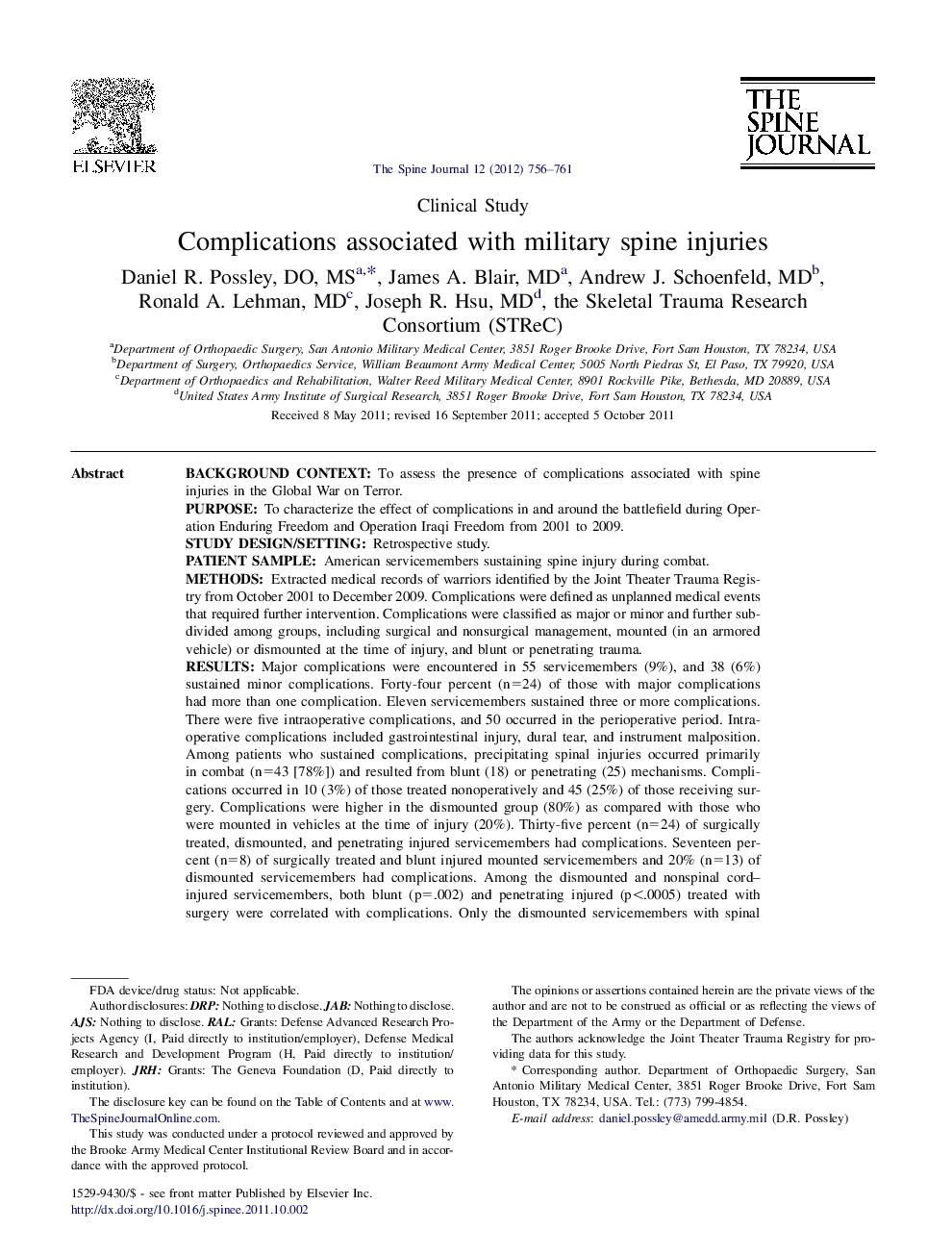| کد مقاله | کد نشریه | سال انتشار | مقاله انگلیسی | نسخه تمام متن |
|---|---|---|---|---|
| 4098043 | 1268606 | 2012 | 6 صفحه PDF | دانلود رایگان |

Background contextTo assess the presence of complications associated with spine injuries in the Global War on Terror.PurposeTo characterize the effect of complications in and around the battlefield during Operation Enduring Freedom and Operation Iraqi Freedom from 2001 to 2009.Study design/settingRetrospective study.Patient sampleAmerican servicemembers sustaining spine injury during combat.MethodsExtracted medical records of warriors identified by the Joint Theater Trauma Registry from October 2001 to December 2009. Complications were defined as unplanned medical events that required further intervention. Complications were classified as major or minor and further subdivided among groups, including surgical and nonsurgical management, mounted (in an armored vehicle) or dismounted at the time of injury, and blunt or penetrating trauma.ResultsMajor complications were encountered in 55 servicemembers (9%), and 38 (6%) sustained minor complications. Forty-four percent (n=24) of those with major complications had more than one complication. Eleven servicemembers sustained three or more complications. There were five intraoperative complications, and 50 occurred in the perioperative period. Intraoperative complications included gastrointestinal injury, dural tear, and instrument malposition. Among patients who sustained complications, precipitating spinal injuries occurred primarily in combat (n=43 [78%]) and resulted from blunt (18) or penetrating (25) mechanisms. Complications occurred in 10 (3%) of those treated nonoperatively and 45 (25%) of those receiving surgery. Complications were higher in the dismounted group (80%) as compared with those who were mounted in vehicles at the time of injury (20%). Thirty-five percent (n=24) of surgically treated, dismounted, and penetrating injured servicemembers had complications. Seventeen percent (n=8) of surgically treated and blunt injured mounted servicemembers and 20% (n=13) of dismounted servicemembers had complications. Among the dismounted and nonspinal cord–injured servicemembers, both blunt (p=.002) and penetrating injured (p<.0005) treated with surgery were correlated with complications. Only the dismounted servicemembers with spinal cord injuries because of a penetrating mechanism were also at an increased risk for complications (p<.0005).ConclusionsPatients treated with surgery appear to be at increased complication risk regardless of the mechanism of injury. Uparmored vehicles may safeguard servicemembers from spine injuries and complications associated with their treatment. This may be reflective of the fact that less severe spinal and concomitant injuries are sustained in the precipitating trauma because of the protection afforded by the vehicle. Dismounted soldiers had more complications in all groups regardless of type of management or injury mechanism.
Journal: The Spine Journal - Volume 12, Issue 9, September 2012, Pages 756–761